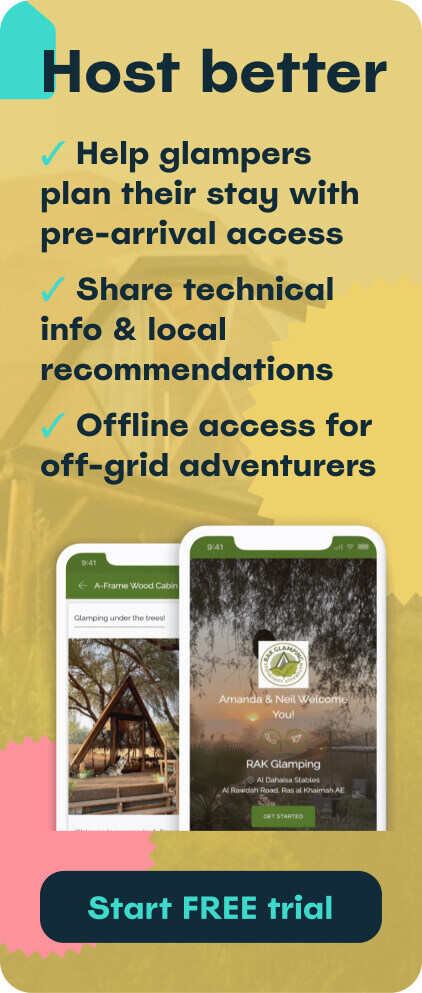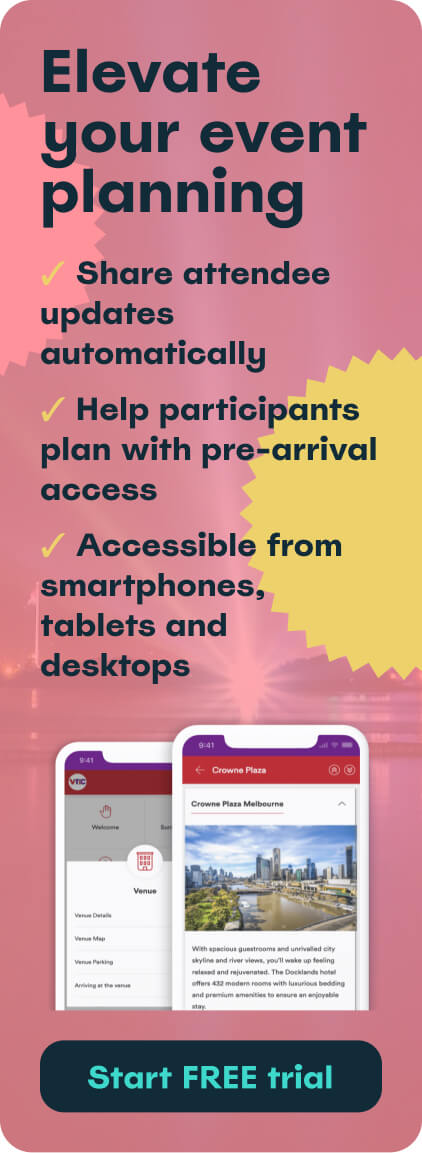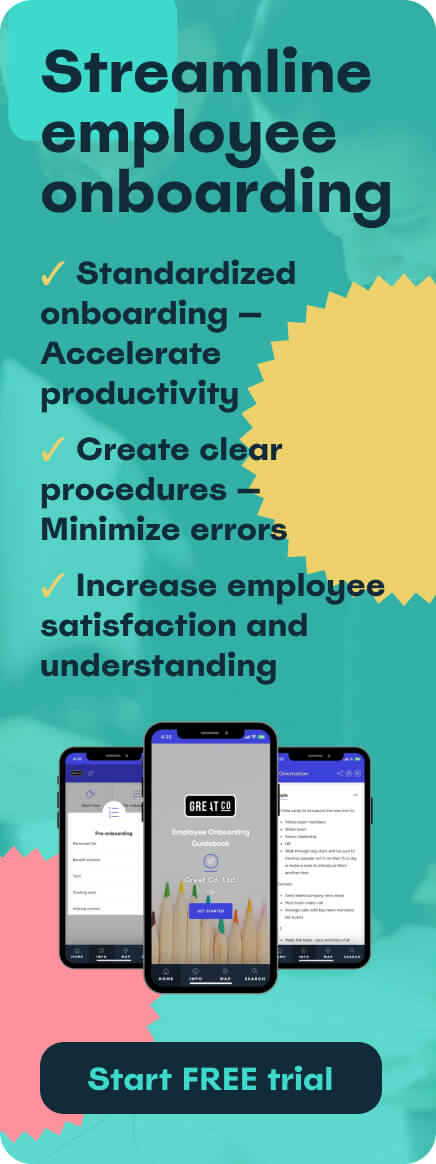TL;DR (Quick Answer)
Finding the right client onboarding software can make or break your customer experience in 2025. The best tools centralize tasks, automate repetitive work, and keep both teams and clients aligned from day one.
Here’s the quick summary:
-
Best for simplicity: Touch Stay - clear digital guidebooks for clients.
-
Best for structured onboarding: GuideCX - transparent client portals and task automation.
-
Best for HubSpot users: Arrows - onboarding directly inside your CRM.
-
Best Salesforce-native option: Precursive (OBX) - combines onboarding with resource planning.
-
Best for SaaS adoption: ChurnZero and Userpilot - drive activation with in-app guidance.
-
Best for training-focused teams: Skilljar - scalable customer education.
-
Best for high-touch onboarding: Dock and Rocketlane - branded client workspaces and project templates.
Each platform approaches onboarding differently, some focus on project management, others on in-app product tours or customer education. Choose based on your workflow, client volume, and how hands-on your onboarding process needs to be.
Client onboarding is the process of welcoming new customers and guiding them through their first steps with your product or service. It’s where expectations are set, understanding is built, and the foundation for a long-term relationship takes shape.
When onboarding works well, clients feel supported and confident. When it doesn’t, frustration sets in fast, and that’s when churn begins.
Client onboarding software helps teams manage this stage more smoothly. These tools centralize onboarding tasks, provide a shared workspace for both sides, and automate routine steps so nothing gets lost or delayed.
In this article, we’ll explore:
- What is client onboarding software?
- Why is client onboarding software important?
- Top 15 client onboarding software tools
- Final thoughts
- Frequently asked questions
What is client onboarding software?
Client onboarding software provides a single place to coordinate everything that needs to happen after a client signs on. Instead of juggling spreadsheets, email threads, slide decks, and shared folders, onboarding tools bring it all together in one organized workflow.
Most platforms include:
- Task checklists and guided workflows
- Shared portals or collaborative workspaces
- Automatic reminders and follow-ups
- Centralized document and resource storage
- Progress tracking and status visibility
The goal is straightforward: make onboarding consistent, transparent, and easy to manage for both your team and your client.
Tip: Check out our B2B customer onboarding guide to get a crash course in onboarding best practices.
Why is client onboarding software important?
If you’re not sure whether you need an entire software program dedicated to client onboarding, check out these benefits.
Improves the client experience
Clear steps and shared visibility help clients feel informed, supported, and included in the process, not left guessing what happens next.
Automates repetitive tasks
Follow-ups, reminders, access requests, and standard setup steps no longer need to be done manually. Your team gets time back to focus on higher-value work.
Enhances communication and transparency
Instead of long email chains, clients can log in, see where things stand, and know what’s expected of them. It reduces back-and-forth and speeds up progress.
Boosts retention and long-term satisfaction
Clients who have a smooth start are more likely to continue, upgrade, and recommend your service to others. Onboarding is where loyalty begins.
Reduces time-to-value
The faster clients understand your product and start using it effectively, the sooner they see results and the more likely they are to stay.
Top 15 client onboarding software tools
Before we get into details, here’s a quick comparison of the tools on our list:
| Tool | Best for | Starts at | Free trial/tier | Standout features |
| Touch Stay | Sharing clear onboarding info with customers/guests | $12.50/mo | 14 days | Digital guidebooks, templates, mobile-friendly access |
| GuideCX | Client onboarding where email-driven collaboration matters | $5,000/yr | X | Actionable emails, Gantt/kanban views, status transparency |
| Arrows | Teams who run onboarding directly inside HubSpot | $100/mo | 7 days | HubSpot-native checklists, token-based personalization |
| Precursive (OBX) | Salesforce-native onboarding and capacity planning | $33/user/mo | X | Resource planning, utilization dashboards, PSA workflows |
| ClientSuccess | Mid-market CS teams needing simple onboarding playbooks | Custom pricing | X | Customer 360, playbooks, alerts, email logging |
| ChurnZero | SaaS onboarding tied directly to product usage | Custom pricing | X | In-app guides, health scores, automation, usage tracking |
| Walnut | Interactive product demos for hands-on onboarding | $750/mo | X | No-code demos, personalization, engagement analytics |
| Whatfix | Enterprise in-app walkthroughs and guided UI help | Custom pricing | X | Walkthroughs, tooltips, self-help widget, analytics |
| Userflow | Fast, lightweight in-app checklists and tours | $240/mo | 14 days | Visual builder, low script weight, targeting |
| Userpilot | SaaS teams improving onboarding without developers | $299/mo | Free trial | Walkthroughs, checklists, tooltips, surveys, analytics |
| Skilljar | Customer education academies and training at scale | Custom pricing | Limited pilot by request | Branded training portals, certifications, course analytics |
| Dock | High-touch onboarding with shared workspaces | $350/mo | ✓ | Client workspaces, mutual action plans, content hub |
| Onboard.io | Purpose-built onboarding project plans | $25/user/mo | 14 days | Playbooks, client portal, CRM sync, automated reminders |
We’ve broken tools down into their key features, who benefits the most from them, pros and cons based on used reviews, and user review scoring. Here are our top picks (in no particular order).
1. Touch Stay

Touch Stay is a digital guidebook platform originally built for hospitality, but it also works well for teams who want to create simple, shareable onboarding guides for new customers. Instead of sending long emails or scattered documents, you organize all key information into a clean, centralized guide that’s easy to open on any device.
Customers get answers faster, teams answer fewer repetitive questions, and the onboarding experience feels more welcoming and less overwhelming.
Best for: Teams that want to reduce onboarding questions by giving customers a single, well-structured information hub.
Key features:
- Digital guidebooks accessible on any device
- Sections, categories, and quick-scannable layouts
- Embedded videos, images, checklists, and step-by-step instructions
- Share via link, QR code, or email
- Basic analytics to see what customers view most
- AI assistant to answer customer questions immediately
Pricing: Payments start at 1 guidebook for $12.50/month. Tiered pricing based on number of guidebooks and usage. Entry-level plans available and a 14 day free trial.
|
Pros |
Cons |
|
Easy to create clear, organized digital guidebooks |
Not designed for step-by-step product onboarding workflows |
|
Reduces repetitive questions by centralizing key info |
Limited automation compared to dedicated CS/onboarding platforms |
|
Accessible on any device via link or QR code (no app needed) |
Analytics are lighter and focused on guide usage, not lifecycle metrics |
|
Flexible formatting for different use cases (guests, new hires, etc.) |
Works best when your onboarding challenge is clarity, not feature adoption |
2. GuideCX

GuideCX is a client onboarding and project delivery platform built around keeping customers actively engaged during implementation. Instead of sending status emails or keeping onboarding progress hidden in spreadsheets, GuideCX invites customers into the process with a clean, client-facing portal (no password required).
Best for: Companies with structured onboarding processes that want to increase client participation and reduce time-to-value.
Key features:
- Client-facing project portal with no-login access
- Task management with Gantt, Kanban, and list views
- Automated reminders and “actionable emails” customers can complete without logging in
- Internal vs. external messaging controls
- Salesforce, HubSpot CRM card, Jira, Slack integrations (higher tiers)
- Reporting on project timelines, task bottlenecks, and customer engagement
Pricing: Starter starts at $5,000/year (unlimited projects and customers). Premium and Advanced are quote-based and add integrations/iPaaS, SSO, surveys, BI, and PSA features. No free trial.
|
Pros |
Cons |
|
Customers can participate easily without creating an account |
Requires process setup upfront for complex onboarding |
|
Clear visibility for both internal teams and customers |
Customization on customer-facing emails is somewhat limited |
|
Helps reduce time-to-value by keeping tasks moving |
Minimum 4-seat buy-in may feel pricey for small teams |
|
Smooth CRM-to-onboarding handoff |
Can generate a lot of automated email volume if not configured carefully |
3. Arrows

Arrows is a customer onboarding checklist tool built directly into HubSpot. Instead of managing onboarding steps in spreadsheets or external PM tools, Arrows turns onboarding into a structured, trackable workflow inside your CRM. Customers get a clean, easy-to-follow shared plan. CSMs get real-time visibility and automation through HubSpot workflows.
Best for: Teams that live in HubSpot and want onboarding to feel native to their CRM.
Key features:
- Shared onboarding plans embedded in HubSpot records
- Customer-facing checklists with comments and file upload support
- HubSpot Workflows can auto-create onboarding plans at Closed-Won
- Personalized tasks using CRM tokens
- Optional sales-to-success “digital sales room” continuity
- Alerts and reminders delivered through HubSpot email or Slack (via HubSpot)
Pricing: Three plans in the $100–$1,250/month range, depending on plan and active usage. No permanent free tier (7-day trial available). Pricing varies; best fit for companies already committed to HubSpot.
|
Pros |
Cons |
|
Feels native to HubSpot – no extra system to manage |
Not useful if you’re not a HubSpot org |
|
Very simple for customers to follow and complete tasks |
Fewer advanced onboarding features than dedicated PM-style tools |
|
Automates onboarding playbooks with HubSpot Workflows |
Analytics rely on HubSpot reporting rather than Arrows directly |
|
Strong support and responsive product team |
Can get pricey as usage scales, especially for smaller CS teams |
4. Precursive (OBX)

Precursive blends onboarding project management with resource planning and time tracking. It’s fully Salesforce-native, meaning onboarding timelines, task progress, staffing, and customer data all live inside your CRM.
Best for: Salesforce-centric organizations with structured, services-heavy onboarding or implementation work.
Key features:
- Salesforce-native project plans tied to accounts and opportunities
- Resource scheduling based on skills, workload, and availability
- Time tracking and budget vs. actual reporting
- Client collaboration via shared tasks, comments, and approvals
- Pre-built dashboards for onboarding velocity, utilization, and project health
- Templates and automated project creation at deal close
Pricing: Starts around $33/user/month on Salesforce AppExchange, but total cost varies based on team size and PSA modules. No free tier. Typically a mid-five-figure annual investment for most teams using it at scale.
|
Pros |
Cons |
|
Combines onboarding tasks and resource management in one place |
UI can feel heavy or “Salesforce-like” for non-technical users |
|
Strong visibility into capacity and workload forecasting |
Setup/configuration takes time and clarity of process |
|
Smooth handoff from sales since it’s inside Salesforce |
Limited usefulness if your company doesn’t run on Salesforce |
|
Can shorten time-to-value and improve revenue recognition timeline |
More complex and expensive than lightweight onboarding tools |
5. ClientSuccess

ClientSuccess is a customer success platform that helps teams manage the full post-sale lifecycle, including onboarding. It focuses on making CSM workflows straightforward: playbooks, task queues, health scores, and customer context all live in one place.
Best for: Mid-market SaaS companies that want onboarding playbooks and health tracking without enterprise-level complexity.
Key features:
- Onboarding and lifecycle playbooks
- Customer 360 view with notes, emails, usage (if integrated), and ticket history
- Health scoring and alerting
- Renewal management and forecasting
- NPS and CSAT surveys built in
Pricing: Quote-based. No free tier. Considered more affordable and lighter-weight than some others.
|
Pros |
Cons |
|
Easy for CSMs to adopt and use daily |
Limited customization in certain modules like NPS questions |
|
Clear view of each customer’s status and history |
Integrations not as deep as larger CS platforms |
|
Playbooks help standardize onboarding steps |
Not a full onboarding project tool if your process is complex |
|
Good support and training resources |
Some features feel simpler compared to enterprise CS suites |
6. ChurnZero

ChurnZero is a customer success platform that emphasizes product adoption during onboarding. It connects directly to your product to track real usage behavior, then triggers alerts, playbooks, and in-app guides to drive activation. It’s strong for teams that want to reduce churn by making sure customers actually use the product from day one.
Best for: SaaS teams that want to track onboarding progress through real product usage and automate follow-ups.
Key features:
- Real-time product usage tracking and health scoring
- Automated onboarding email sequences and alerts
- In-app walkthroughs, pop-ups, and resource center
- Customer segments and dynamic playbooks
- NPS and CSAT surveys via email or in-app
Pricing: Quote-based. No free tier.
|
Pros |
Cons |
|
Strong at monitoring product adoption and identifying drop-off points |
Requires product instrumentation to unlock full value |
|
In-app guides help users onboard inside the product itself |
UI has a learning curve because of breadth of features |
|
Automation helps small CS teams scale onboarding touchpoints |
Pricing may be high for very small teams |
|
Often credited for reducing churn and improving activation rates |
Implementation takes effort, especially defining usage events |
7. Walnut

Walnut is a codeless interactive demo platform that lets you create clickable, guided product experiences without requiring access to a live environment. While originally built for sales demos, it works well for onboarding when you want to train customers in a safe, simulation-style space before they use the real product.
Best for: Teams that want hands-on, guided training experiences without setting up sandbox environments.
Key features:
- No-code editor for building interactive product demos
- Personalized walkthroughs for different customer segments
- Shareable demo links or website embeds
- Engagement analytics to see where users drop off
- Easy updating when the product UI changes
Pricing: Starts at $750/month (billed annually) for entry-level packages. No free tier. Walnut is often most cost-effective when Sales is already using it and Customer Success simply adds seats for onboarding and training.
|
Pros |
Cons |
|
Highly engaging onboarding experiences that feel close to real usage |
Costs can be hard to justify if used only for onboarding |
|
No engineering needed to build or update training flows |
Experiences live outside the app, not inside the product UI |
|
Good for training new users or new hires at customer companies |
Requires ongoing upkeep as product UI changes |
|
Analytics show where users get stuck during onboarding demos |
Not a full CS or onboarding management platform on its own |
8. Whatfix

Whatfix is a digital adoption platform that overlays guided walkthroughs, tooltips, and self-serve help directly inside your product. It’s designed for large or growing teams that want to onboard users in-app, reduce support volume, and continuously reinforce product education.
Best for: Organizations that want interactive, real-time onboarding inside the product interface itself.
Key features:
- In-app step-by-step walkthroughs and guided tours
- Tooltips, hotspots, banners, and beacons
- In-app resource/help center
- Segmented onboarding based on user role or behavior
- Analytics on flow completion and feature usage
Pricing: Enterprise-level custom pricing. No free tier.
|
Pros |
Cons |
|
Onboards users directly in the product, reducing training friction |
Initial setup and ongoing maintenance require attention |
|
Strong for large teams or complex products with multiple workflows |
Pricing can be a barrier for smaller companies |
|
Reduces support tickets by making guidance always available in-app |
Poorly configured pop-ups can overwhelm users |
|
Robust segmentation and analytics for improving UX |
Requires commitment to keep flows updated as product evolves |
9. Userflow

Userflow is a lightweight onboarding tool that lets you create in-app product tours, checklists, and announcements without coding. It’s known for being fast to deploy and easy to maintain, making it a good fit for SaaS teams that want onboarding automation but don’t need enterprise DAP complexity.
Best for: SaaS teams that want quick, self-serve product onboarding at a reasonable price.
Key features:
- Visual flow builder for in-app walkthroughs
- Onboarding checklists that show progress to users
- Segmentation and targeting controls
- Basic analytics for tracking completion and engagement
- Integrations with HubSpot, Intercom, Segment, and others
Pricing: Starts at $240/month (billed annually) for up to ~3,000 MAUs. Higher tiers scale usage and team seats. 14-day trial available.
|
Pros |
Cons |
|
Very fast to implement and iterate |
Analytics are more basic than enterprise tools |
|
Lightweight in-app guidance that blends into the product |
No native mobile app onboarding support |
|
Affordable for early and mid-stage SaaS companies |
Complex branching flows require some planning |
|
Checklists help users reach activation milestones |
Price increases with larger MAU volume |
10. Userpilot

Userpilot is a no-code platform for creating in-app onboarding experiences that help new users adopt key product features faster. Teams use it to build product tours, checklists, tooltips, and contextual guidance that appears exactly when users need it. It’s focused on driving product activation and reducing the time it takes for customers to reach their first “aha” moment.
Best for: SaaS companies that want to improve onboarding and product adoption with in-app guidance, without requiring engineering support.
Key features:
- In-app product tours and interactive walkthroughs
- Onboarding checklists tied to activation milestones
- Contextual tooltips, hotspots, and reminders
- Feature usage and adoption analytics
- Segmentation and personalized in-app experiences
Pricing: Plans start at $299/month for a Starter plan, with Growth and Enterprise pricing available upon request. There is a free trial available on the Starter plan, along with demos for higher plans
|
Pros |
Cons |
|
Easy to build onboarding flows without developers |
Pricing increases with monthly active users |
|
Strong for driving activation and early feature adoption |
Best results require clear activation goals |
|
Flexible segmentation and targeting |
Setup takes time if your product is complex |
|
Good usage and adoption analytics |
Limited for deeper customer lifecycle workflows |
11. Skilljar

Skilljar is a customer education and training platform built for external audiences (your customers, not just internal employees). You deliver on-demand courses, track certifications, and guide new users through structured learning paths. It’s used in onboarding when you want to scale education and reduce manual training or support calls.
Skilljar was acquired by Gainsight in 2023, but the platform continues to operate independently and is still widely used as a standalone customer education and onboarding system.
Best for: Companies with moderately complex products that benefit from structured self-paced customer training and certification.
Key features:
- Course authoring and hosting (videos, slide decks, quizzes, learning paths)
- Certifications, assessments and completion tracking
- Analytics (enrollment, completion rates, quiz scores)
- Integrations (CRM, CS tools, SSO)
- White-labeling and custom domains
Pricing: Premium platform with custom pricing for 3 different plans. No free tier.
|
Pros |
Cons |
|
Scales customer education effectively |
Cost is high for small companies |
|
Learner courses reduce manual training burden |
Setup requires content creation and maintenance |
|
Strong analytics on learning outcomes |
Doesn’t natively support live webinar training |
|
Good integrations into CRM/CS ecosystem |
Customization of portal UI has limitations |
12. Dock

Dock is a client onboarding workspace and portal, designed to give each new customer a branded hub containing tasks, docs, updates, and collaboration. It’s a blend of project management and client facing portal, great for teams that hand-off from sales to success and want a one-stop onboarding hub.
Best for: Mid-sized companies with high-touch customer onboarding where clients expect professionalism and clear visibility.
Key features:
- Branded workspace for each client (tasks, docs, meetings)
- Mutual action plans/templates: tasks for you and tasks for the client
- Embeddable content: videos, docs, calendars, forms
- Integrations with CRM/Slack/ClickUp etc.
- Analytics on client engagement (who viewed, what tasks remain)
Pricing: Free forever plan (basic), Standard $350/month, Premium $750/month (annual billing) for growing teams. Enterprise tiers custom.
|
Pros |
Cons |
|
Highly professional client experience |
Integrations may be limited on lower tiers |
|
Centralizes onboarding docs and tasks |
Some UI quirks reported |
|
Flexible embedding and branded portals |
Still fewer advanced features than major PSAs |
|
Good free entry point to trial |
Requires internal discipline to adopt effectively |
13. Onboard.io

Onboard.io is a client onboarding workspace that replaces messy spreadsheets, scattered email threads, and unclear handoffs. You create project templates, assign tasks to both your team and the customer, and collaborate in a shared portal that’s easy for everyone to follow. Clients always know what to do next, which reduces chasing, delays, and confusion.
Best for: SaaS and services teams that want a structured onboarding plan clients can easily follow.
Key features:
- Project templates that auto-generate onboarding plans
- Client-facing onboarding portal with magic-link access (no login required)
- Task assignments for both internal and customer teams
- Automated reminders and timeline tracking
- Salesforce and HubSpot integrations for smooth sales handoff
Pricing: Starts at $25 per user/month on lower tiers. Mid-tier plans around $300/month for 5 seats. Advanced plans go for $1000/month with more seats, resource planning, analytics, and SSO. Free trial available.
|
Pros |
Cons |
|
Clear shared workspace keeps clients and teams aligned |
Lower tiers have limited integrations |
|
Fast to roll out and easy to maintain |
Some UI customization options are minimal |
|
Strong collaboration without requiring client logins |
One-owner-per-task can feel restrictive on complex projects |
|
Predictable project timelines and bottleneck insight |
Not a full in-app training or product adoption tool |
14. Gainsight CS

Gainsight CS is a full customer success platform built for scaling teams. It centralizes customer health scoring, lifecycle playbooks, usage insights, alerts, QBR prep, renewal forecasting, and task workflows. It’s powerful and mature, but it requires process discipline and time to implement well.
Best for: Mid-market and enterprise CS teams managing complex accounts and long customer journeys.
Key features:
- Customer health scoring with usage and sentiment signals
- Playbooks for onboarding, adoption, and renewal workflows
- Customer 360 profiles across product, support, and CRM data
- In-app and email NPS/CSAT surveys
- Dashboards and executive reporting for churn and expansion forecasting
Pricing: Custom enterprise pricing. Demos available upon request. No free tier.
|
Pros |
Cons |
|
Deep customer visibility and reporting |
Higher cost compared to most CS platforms |
|
Mature playbooks and lifecycle automation |
Requires significant setup and ongoing administration |
|
Strong integration ecosystem across CRM and product data |
Can be overwhelming for small teams or simple workflows |
|
Excellent support for scaling complex onboarding |
Best results require dedicated ops ownership |
15. Rocketlane

Rocketlane is a client onboarding and implementation platform that combines project management, document collaboration, forms, and a customer portal in one place. It’s been thoughtfully designed so both sides always know what’s happening, what’s due next, and how fast the go-live is progressing. It sits somewhere between PSA tools and onboarding-specific workspaces.
Best for: SaaS and services teams that manage multi-phase onboarding or implementation projects.
Key features:
- Project and task workflows with templates and phased plans
- Customer-facing portal for shared visibility and communication
- Intake forms and document collaboration built into the workspace
- Time tracking and resource allocation for services teams
- Performance dashboards for onboarding duration and bottlenecks
Pricing: Starts around $19-$49 per user/month depending on tier and team size. Enterprise plans add SSO, advanced security, and resource planning. Free trial available.
|
Pros |
Cons |
|
Everything onboarding lives in one shared workspace |
More features than some teams need if onboarding is lightweight |
|
Clean portal makes the customer side easy to follow |
Time tracking adds process overhead if not needed |
|
Templates improve consistency and speed |
Learning curve if moving from simple spreadsheets |
|
Strong reporting on onboarding efficiency |
More complex than tools that focus only on checklists |
Final thoughts
Client onboarding works best when the customer knows what to do, what’s expected of them, and where to find answers. Most of the tools we covered solve that in different ways. Some give you project plans, some guide users inside your product, and some act as simple knowledge hubs.
If your onboarding involves giving customers instructions, sharing how-to info, and trying to reduce repeat questions, Touch Stay is a good fit. It lets you give people a clear, well-organized guide they can access anytime, so your team doesn’t have to keep re-answering the same things.
If that’s the kind of onboarding you handle, start there.
Frequently asked questions
Small teams usually do better with tools that are easy to set up and don’t require a full “process overhaul.”
Good fits include:
- Touch Stay for sharing onboarding instructions and reference info
- Onboard.io for a simple shared onboarding plan
- Userflow if your onboarding happens inside your product’s UI
These are all tools you can roll out without a big training phase.
For larger teams, look for:
- Permissions and role controls
- Integrations with CRM, support platforms, and analytics
- Reporting that leadership can actually use (not just charts)
- Support for multiple onboarding templates or playbooks
- The ability to track account-level progress across many customers at once
At scale, visibility and consistency matter more than fancy UI.
Focus on:
- Whether your customers will understand and actually use it
- How well it fits the way your team already works
- How easy it is to update when your process changes
- Whether it helps you see what’s blocked and why
The goal is clarity. If the tool makes onboarding feel heavier, skip it.
Most churn happens when customers never fully get set up or don’t know how to use key features.
Onboarding software reduces that by:
- Making responsibilities and next steps clear
- Reducing back-and-forth emails and delays
- Helping customers reach basic proficiency faster
- Showing you when someone is stuck so you can step in
Retention becomes a downstream effect of customers actually knowing how to use what they bought.

Laura Clayton
Laura Clayton is a copywriter with a BA in fiction writing from Columbia College Chicago. From holding a position as a background investigator retained by the United States government, to teaching English, and writing about real estate, Laura has a diverse and varied background. She has been writing for SaaS companies since 2019 in a wide range of industries.
Be the first to know!
Join our newsletter for early access to:
- ✅ Free guides
- ✅ Pro tips & tricks
- ✅ Time saving tutorials
- ✅ Latest blog posts
- ✅ Checklists & templates














